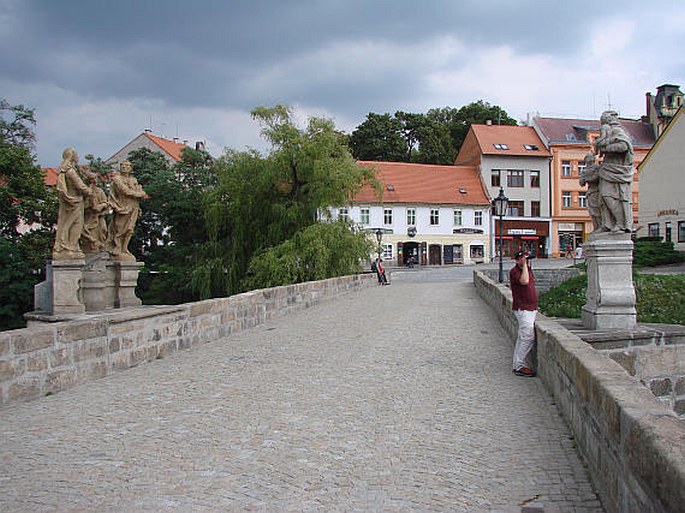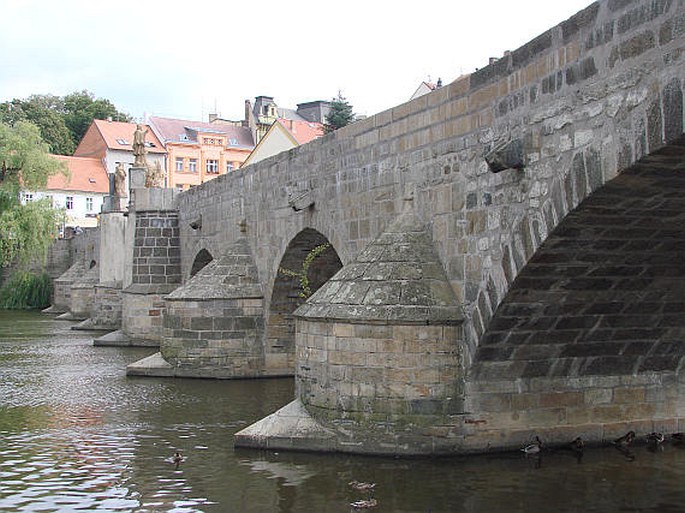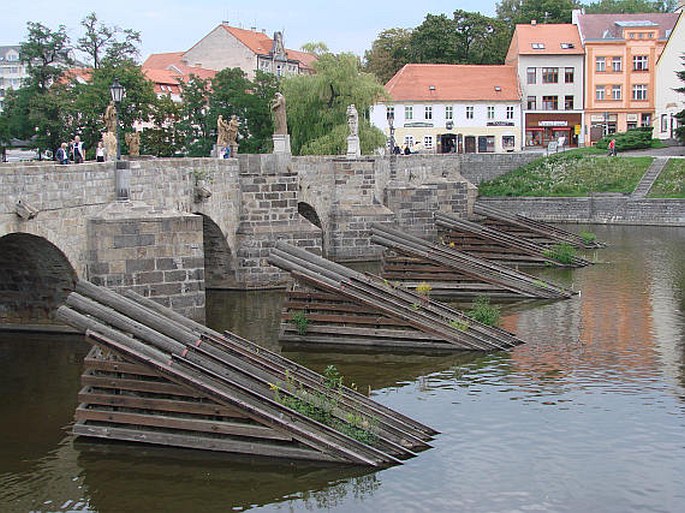I dare say that who does not like bridges, does not like people, too. The bridge can be never product of a misanthrope, dissembler, or detractor. „Go!“ – the bridge builder exclaims – „the sky is the same everywhere! So run to the other side of the river and see how people are the same anywhere!“ In our online journey for flowers of bridges we have previously visited the most famous Czech bridge, the Charles Bridge in Prague. Let’s look now at the oldest bridge.

The oldest preserved stone bridge in our country is located in the South-Bohemian town of Pisek. It is the second oldest bridge still in use in Europe – only the bridge in German Regensburg is older. The earliest written report of its existence come up from time reign of Charles IV. It is assumed, however, that its construction had begun already in the second half of the 13th century. In the 18th century the most decorated Baroque statues in the nineties of the 20th century had undergone a complete refurbishment. The catastrophic floods in 2002 devastated part of bridge, but the vault of bridge resisted damage. Compared to the Charles Bridge, this one is of course much smaller – Otava river in Písek is not Vltava in Prague. The length of this bridge is only one fifth of the Charles Bridge (measured 111 meters).

On the deck of the bridge we didn’t find many plants. Some little plants can be found only in the fissures at the edge of pavement and bridge sides – no surprise a few grasses, dandelions, a Shepherd’s Purse or a daisy. A little more interesting is the Hedgerow Geranium (Geranium pyrenaicum) and the Redstem Stork’s Bill (Erodium cicutarium). We can not overlook gardeners Petunia plantings in close proximity to the bridge. However, it can be said that compared with his younger brother from Prague, the Stone Bridge in Písek is basically a lot flowerless. Only occasionally we discover some small birch or ferns.

However, what we didn’t find on the bridge coat, we discovered on the nearby ice guards! They have a solid stone base, and are attached to the wooden beams. It’s sufficiently wet habitat, but also dry and very sunny.

So when we all is added together, based on our discoveries on the bridge (and especially on ice guards in its vicinity) we counted 40 taxa of vascular plants. In comparison with the Prague Charles Bridge, it’s less, but given the size of the bridge it is a solid number. The explanation of the fact that the smaller species were found, would be that the recent repairs provided tighter gaps for germination of seeds.
On the pavement, bridge coat and ice guards we found the following species:
Acer pseudoplatanus
Alnus glutinosa
Artemisia vulgaris
Asplenium ruta-muraria
Bellis perennis
Betula pendula
Bidens tripartita
Bromus inermis
Capsella bursa-pastoris
Conyza canadensis
Crepis biennis
Dryopteris sp.
Epilobium hirsutum
Erodium cicutarium
Galinsoga parviflora
Geranium pyrenaicum
Hypericum perforatum
Lycopus europaeus
Lysimachia vulgaris
Lythrum salicaria
Mentha longifolia
Myosotis sp.
Petunia ×atkinsiana
Phalaris arundinacea
Poa annua
Populus tremula
Robinia pseudacacia
Salix euxina
Scutellaria galericulata
Senecio vulgaris
Silene vulgaris
Solidago canadensis
Stellaria media
Tanacetum vulgare
Taraxacum sect. Ruderalia
Urtica dioica
Verbascum sp.

Catastrophic flood in 2002 demolished, among others, the statue of an angel. When it was recovered from the bottom of the Otava River, it was found heavily damaged, and had to be completely recarved. It is now back on the bridge in full glory. So, angel, look after our bridge garden! Keep an eye out for the big water, but also for all intruders! We know already that whoever does not like bridges, does not like people! And the bridges certainly include flowers.


